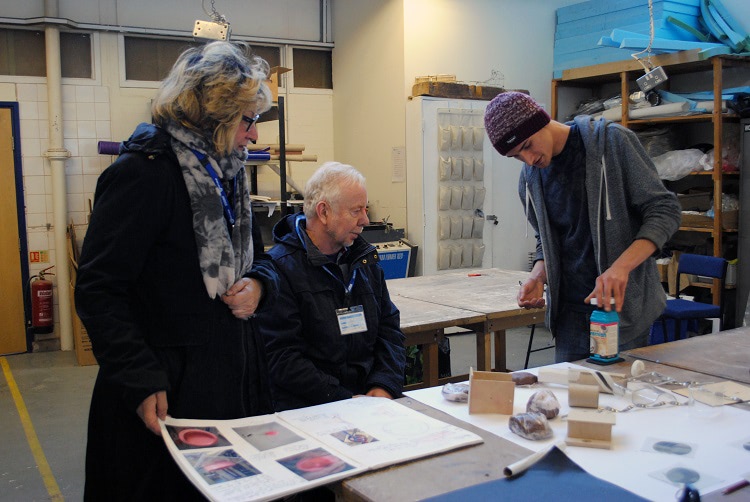Bath College students challenged to think about accessible design

Product design students at Bath College are working with a national charity on a project to get them thinking about accessible design.
The Level 3 students are developing products to make daily life easier for people with a variety of needs and disabilities.
They will pitch their designs to Rob Hanson, from the charity Designability, which works with people, carers and health professionals to create new life-changing products.
Students have met three end users as part of the project, in order to understand some of the challenges they face.
James Onyett decided to design a bottle opener after meeting Peter Hinchley, who has been severely affected by a stroke and wanted a product to help with movement and dexterity.
He tested a number of options before settling on a 3D printed mould, which can be used one-handed and fits on top of a new bottle making it easier to break the seal.
James, who is applying to study sustainable design at Falmouth University, said: “I appreciated the fact that he came in to speak to us about his daily routine.
“Being able to speak to a real person is important, it’s much better than trying to guess what people need.
“After that, it was easy to get an idea for a product that might help Peter and his reaction to the product was really good.
“I enjoy product design because it’s about solving problems and inventing. If you’re able to create new products, you can contribute to society.”
Students also worked on a range of designs for two end users who find it difficult to walk, creating a design for a walking stick to make it easier to climb up and down stairs.
Young designer Oriana Viall has been developing a handbag storage compartment with moveable sections to carry and manage pain relief.
Product design lecturer James Purslow said: “This is a really good unit for us to explore. It challenges the students’ perception of design and makes them focus on the needs of the user, rather than their own interests.
“They get to meet members of the public they wouldn’t normally meet, and learn how to communicate with them as a designer.
“The students also have to pitch their concept to their mentor from Designability. Wherever they progress onto, being able to consider the requirements of clients and end users will give them a clear advantage over their peers.”











Responses